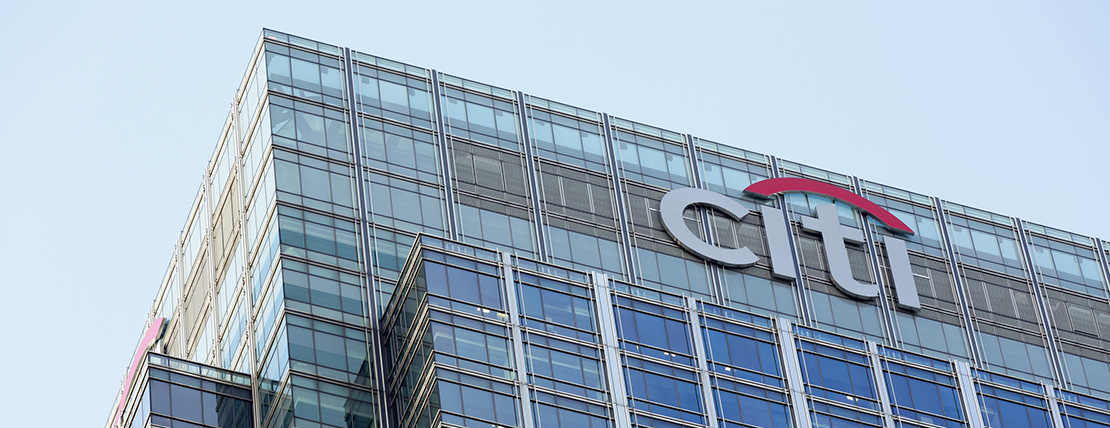Citigroup Inc. told its United Kingdom employees that it will begin monitoring office attendance data to identify hybrid holdouts, Bloomberg News reports.
Citi is one of many Wall Street firms that is increasingly pushing its employees back to the office and it will begin monitoring how effective its hybrid work policy is. Staff in the UK were informed they face disciplinary action, such as bonus adjustments and termination, for failing to make their way into the office.
“One swipe per person, per day, per location will be captured,” the memo said. “The focus of the reports will be employees with consistent office absences.”
Citigroup, which has 12,500 staff in the UK, requires hybrid employees to spend at least three days in the office. The monitoring, which is already in place in the United States, came after a month-long consultation with UK employees.
The U.S. lender is widely seen to be among the most amenable financial firms when it comes to flexible work arrangements following the COVID-19 pandemic, Bloomberg noted. The vast majority of its roughly 240,000 employees are considered hybrid and the bank has used the policy to retain and attract employees across its businesses during CEO Jane Fraser’s time atop the firm.
The bank will begin tracking individual staffers’ office attendance on a monthly basis as early as Aug. 7. The proposal will also allow Citigroup to collect aggregated office data every two weeks for the firm’s offices in London, Edinburgh and Belfast.
The note said acceptable reasons for office absence included site capacity limitations, business travel, annual leave, sick leave, medical adjustments, people with formal flexible working agreements and part-time employment.
U.S. Economy Adds 187,000 Jobs in July
The U.S. economy showed some signs of cooling amid a scorching month of weather, as employers added 187,000 jobs last month, according to the Department of Labor’s jobs report.
Unemployment dropped back to 3.5%, which is just above the lowest level since 1969. Average hourly earnings rose 0.4% for the month, making for a 4.4% annual pace.
“The labor market seems to be humming along rather well at this point in the business cycle. A 3.5% unemployment rate, you can’t complain about that,” Satyam Panday, U.S. chief economist at S&P Global Ratings, told CNBC. “It’s a nice glide path down. We would have liked to see wage growth come down a little, but the purchasing power of the consumer seems to be holding up well.”
Healthcare led job creation by industry, adding 63,000 jobs for the month. Other sectors contributing included social assistance (24,000), financial activities (19,000) and wholesale trade (18,000). The other services category contributed 20,000 to the total, which included 11,000 from personal and laundry services.
Leisure and hospitality, which has been a leading sector for most of the recovery in the pandemic era, added just 17,000 jobs, consistent with a slowing trend after averaging gains of 67,000 a month in the first three months of 2023.
Previous months’ totals were revised lower — the June count dropped to185,000, a downward revision of 24,000, while May was cut to 281,000, down 25,000 from the previous estimate.
Even with the slowing job gains, the economy has proved resilient against a variety of challenges, particularly a series of 11 Federal Reserve interest rate hikes aimed at bringing down inflation.
This is a “really, really solid labor market,” Jonathan Sokoe, senior vice president at job placement firm Adecco, told CNBC. Going forward, companies likely will focus on “retention of quality employees, upscaling and rescaling,” he said.
United Auto Workers Union Demands 40% Pay Increase
The United Auto Workers (UAW) union is pressing the Detroit car companies to give its factory workers a 40% pay hike in the next labor contract, an increase that would be the largest in recent memory, the Wall Street Journal reports.
The pay hike was one of several demands the union conveyed to automakers this week, the Journal reports.
The UAW is negotiating new four-year labor agreements for about 150,000 hourly workers at General Motors, Ford Motor and Jeep-maker Stellantis. Currently, unionized factory workers at the Detroit car companies start at about $18 an hour. The top wage, achieved over a period of years, is about $32 an hour.
The 40% pay hike would be a general increase over the life of the next four-year contract. It would be broken up into a 20% increase upon the contract’s ratification, and four additional 5% wage increases given each year, the Journal reports.
A UAW spokesperson said that during the current contract, the average CEO salary at the Detroit car companies has increased 40%. “We believe UAW members deserve the same if not more.”
UAW President Shawn Fain has already taken an aggressive stance with the automakers, pledging to take a different tack than past UAW leaders and make significant gains for members, particularly on wages and benefits lost in previous rounds of talks.
Wages are typically a focus during bargaining between the UAW and the car companies, but this year they have taken on greater prominence, following a period of high inflation, the Journal noted. The union is also demanding a return of cost-of-living adjustments and other benefits given up in previous negotiations to help the car companies survive financially.
Still, a 40% pay increase is unusually large, compared with previous contracts. In the last round of talks, which concluded in late 2019, the union secured two sets of 3% increases over the life of the contract, along with lump-sum payments.
The car companies have historically resisted big pay increases, preferring to instead offer workers bonuses and other one-time payments that don’t add to their fixed costs.
Along with higher wages, the UAW is also seeking greater job security for its members, particularly as the auto industry transitions away from the gasoline vehicles that have long supported factory jobs to building a new generation of electric vehicles.
NLRB Joint Employer Ruling Scheduled for August
The National Labor Relations Board (NLRB) said on Wednesday that it will publish a final rule this month updating the standard for determining when two employers may be considered joint employers under the National Labor Relations Act.
The board’s proposed rule, which was issued in September 2022, would revive the standard articulated in its 2015 Browning-Ferris Industries decision.
Under the proposed rule, two or more employers would be considered joint employers of a group of employees if the employers share or codetermine essential terms and conditions of employment. NLRB would consider both direct evidence of control as well as evidence of reserved, or indirect, control over these terms and conditions when analyzing joint employer status.
The joint employer rule has been imbued in legal challenges amid government instability the past 10 years. The 2020 final rule put forth under the Trump administration was quickly challenged by the Biden administration, and the proposed rule would rescind and replace the 2020 version.
Editor’s Note: Additional Content
For more information and resources related to this article see the pages below, which offer quick access to all WorldatWork content on these topics:







